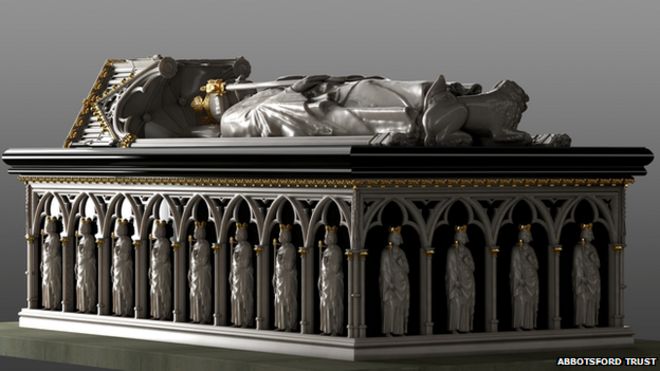Welcome to our Blog!
Hello and a very warm welcome to our very first blog post on behalf of the Abbotsford Heritage and Engagement team! Here at Sir Walter Scott's 'Conundrum Castle', quite literally stuffed to the rafters with antiquarian treasures, we thought it was high time that we shared some of the more quirky and unusual things that we intrepid souls in the Curatorial Department experience on a daily basis. Over the coming weeks and months we will try and shed some more light on particular objects in the collection, discuss potential research projects and interesting unanswered questions and share amusing anecdotes of the weird and wonderful things we end up turning our hands to. Now, as is so often the case with museums and charitable institutions, we are a busy team of two and will be seeking funding and voluntary support to allow us to really develop this blog to act as a tool for anyone who is curious (or indeed serious) about Scott to get something really meaningful from following us. In the meantime, we will try and share as much as we can.
 |
| The digital reconstruction of Robert the Bruce's tomb |
Abbotsford has been open to the public following a major restoration project for almost two years now, so you might be wondering 'why start a blog now?' Well, this week seems like a particularly good time to start sharing our stories as we celebrate the opening of our new 2015 exhibition: 'The Lost Tomb of Robert the Bruce.' This exhibition is the fruit of our first collaborative project with a number of other Scottish heritage bodies, making sharing new ideas and research something that is right at the forefront of our minds. Now, of course, it is our aim that readers will come to the house and see the display for themselves so don't expect to read too many exhibition spoilers here! What I do want to discuss is why I think Scott would have been pleased as punch to have the remaining fragments of the Bruce's tomb here in his beloved home, particularly as so many of the other fragments are far more ornate that the one he managed to acquire!
 |
| The remaining medieval marble fragments found when work was beginning on building the new parish kirk at Dunfermline in 1818 |
Scott and the Bruce
Now, considering his penchant for augmenting history with myth, particularly with regard to reimagining the past of his native Scotland, it will come and no surprise that King Robert I fascinated Scott. 2015 is actually the bicentenary of The Lord of the Isles, one of his final poetical works and one that focuses on the exploits of the exiled Bruce in the seven years leading up to the famous victory at Bannockburn. Not only do we now know that he managed to acquire a piece of the Bruce's impressive marble tomb long since destroyed, but he also proudly displayed a cast of the monarch's skull here at Abbotsford. We know that the original cast of the skull was made by the sculptor, William Scoular, following the exhumation of what was believed to be the King's remains in 1818 whilst building work was going on at Dunfermline Abbey. This cast is now kept in the Anatomy Department of the University of Edinburgh and we know that further casts were taken from this original, one of which proved irresistible to the magpie eye of Sir Walter Scott.
 |
| Scott's Cast of the Bruce's Skull |
"Bruce, seeing the success of the spider, resolved to try his own fortune; and as he had never before gained a victory, so he never afterwards sustained any considerable check or defeat. I have often met with people of the name Bruce, so completely persuaded of the truth of this story, that they would not on any account kill a spider; because it was that insect which had shown the example of perseverance, and given a signal of good luck, to their great namesake."
Although this was the first time this parable of perseverance had entered the public sphere in any major way, the first reference to this small arachnid catalysing events in Scotland's history is buried in an account by David Hume of the exploits of the 'Black' Douglas, Bruce's ally. Now it turns out that Scott has a 1644 edition of this particular book in his library here at Abbotsford: The history of the house and race of Douglas and Angus written by Mr. David Hume of Godscroft , along with a host of other antiquarian historical books on the subject, so we can be pretty sure of where his inspiration for the moral lesson came from!
Throughout Scott's writings you get the sense that he was captivated by the romanticised outlaws of the past and he collected items connected with them, sometimes very spuriously, as if they were magical amulets or totems. As Scotland's most famous warrior king, the tomb fragment is one of the most powerful example of this activity in relation to a monarch and I am positive that the great man himself would be thrilled to see the remaining fragments on public display together; sadly all that now remains of a once grand medieval monument to rival the French tombs of old.
You can visit 'The Lost Tomb of Robert the Bruce' free of charge with a house admission ticket until November 30th 2015. To find out more about visiting us, click here.
Thanks for reading!
Kirsty Archer-Thompson
Heritage and Engagement Manager
Heritage and Engagement Manager

No comments:
Post a Comment